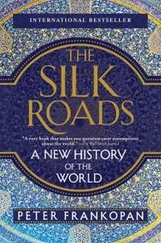Rosalind Miles - The Women’s History of the World
Здесь есть возможность читать онлайн «Rosalind Miles - The Women’s History of the World» — ознакомительный отрывок электронной книги совершенно бесплатно, а после прочтения отрывка купить полную версию. В некоторых случаях можно слушать аудио, скачать через торрент в формате fb2 и присутствует краткое содержание. Жанр: unrecognised, на английском языке. Описание произведения, (предисловие) а так же отзывы посетителей доступны на портале библиотеки ЛибКат.
- Название:The Women’s History of the World
- Автор:
- Жанр:
- Год:неизвестен
- ISBN:нет данных
- Рейтинг книги:5 / 5. Голосов: 1
-
Избранное:Добавить в избранное
- Отзывы:
-
Ваша оценка:
- 100
- 1
- 2
- 3
- 4
- 5
The Women’s History of the World: краткое содержание, описание и аннотация
Предлагаем к чтению аннотацию, описание, краткое содержание или предисловие (зависит от того, что написал сам автор книги «The Women’s History of the World»). Если вы не нашли необходимую информацию о книге — напишите в комментариях, мы постараемся отыскать её.
The Women’s History of the World — читать онлайн ознакомительный отрывок
Ниже представлен текст книги, разбитый по страницам. Система сохранения места последней прочитанной страницы, позволяет с удобством читать онлайн бесплатно книгу «The Women’s History of the World», без необходимости каждый раз заново искать на чём Вы остановились. Поставьте закладку, и сможете в любой момент перейти на страницу, на которой закончили чтение.
Интервал:
Закладка:
We can only guess what crime and punishment enmeshed the older woman . . . But for the young girl, naked, bound, lacerated and perhaps still alive, with the howl of human jackals in her ears, her passport to a merciful oblivion is likely to have been the slime and mire of this chalky trench. 30
No longer sacred, women became expendable. One Aztec ceremony of death was indeed a direct mockery of women’s former power; every December a woman dressed up as Ilamtecuhtli, the Old Goddess of the earth and corn, was decapitated and her head presented to a priest wearing her costume and mask, who then led a ritual dance of celebration followed by other priests similarly attired. This was only one of a number of Aztec rituals of this kind. Every June a woman representing Xiulonen, Goddess of the young maize, was similarly sacrificed, while in August a woman representing Tetoinnan, Mother of the Gods, was decapitated and flayed, her skin being worn by the priest who played the role of the Goddess in the ensuing ceremony. The ‘strike-the-mother-dead’ motif is even clearer in one detail of this grisly procedure – one thigh of the woman victim was flayed separately, and the skin made into a mask worn by the priest who impersonated the son of the dead ‘mother’. 31But similar customs obtained worldwide – in pre-feudal China a young woman was annually selected to be ‘the Bride of the Yellow Count’, and after a year of fattening and beautifying, was cast adrift to drown in the Yangtse Kiang (Yellow River). 32From ritual sacrifice to the enforced suttee of unwanted child-brides, the destruction of women spread like a plague virus through India, China, Europe and the Middle East to the remotest human settlements – anywhere in fact where the phallus held sway.
As societies evolved, male control through brutal force was gradually supplemented by the rule of law. In Rome, the paterfamilias held undisputed power of life and death over all members of his family, of which he was the only full person in the eyes of the law. In Greece, when Solon of Athens became law-giver in 594 B.C., one of his first measures was to prohibit women leaving their houses at night, and the effect of this was to confine them more and more to their homes by day. In ancient Egypt, women became not simply the property but legally part of their fathers or husbands, condemned to suffer whatever their male kindred brought down on their heads. As the horrified Greek historian Diodorus recorded in his World History (60–30 B.C.), innocent women even swelled the ranks of the pitiful slaves whose forced labour built the pyramids:
. . . bound in fetters, they work continually without being allowed any rest by night or day. They have not a rag to cover their nakedness, and neither the weakness of age nor women’s infirmities are any plea to excuse them, but they are driven by blows until they drop dead. 33
Not all women, however, lived as victims and died as slaves: it would be historically unjust as well as inaccurate to present the whole of the female sex as passive and defeated in the face of their oppressions. Even as Aristotle was earnestly discoursing to his students on the innate inferiority of women, a woman called Agnodice in the fourth century B.C. succeeded in penetrating the all-male world of learning. After attending medical classes she practised gynaecology disguised as a man, with such success that other doctors, jealous of her fame, accused her of seducing her patients. In court she was forced to reveal her sex in order to save her life, at which new charges were brought against her of practising a profession restricted by law to men alone. Eventually acquitted of this, too, Agnodice lived to become the world’s first known woman gynaecologist. 34
As this suggests, even under the most adverse circumstances, women have never been wholly subordinate. As a sex, the female of the species has taken a lot of treading down, and the greater the efforts of the emerging phallocrat, the more resourceful and sustained was the resistance he produced. It did not take much female ingenuity, for example, to subvert the systems that men had themselves set up: the worldwide system of menstrual taboo, for instance, by which menstruating women were excluded from society so that they should not infect men, pollute food, or, as Aristotle believed, tarnish mirrors with their breath, in fact provided ample and perfect opportunity for women to develop alternative networks of power, all the more effective for being invisible, unseen. What went on in the menstrual huts or women’s quarters when the women foregathered to bring food, news or messages to a menstruating sister would be beneath the ken of the males; but it would make itself felt in their lives nevertheless.
Not infrequently women’s resistance to masculine control was expressed directly, even violently, as the Roman senators found to their cost in 215 B.C., when to curb inflation they passed a law forbidding women to own more than half an ounce of gold, wear multi-coloured dresses or ride in a two-horse carriage. As the word spread, crowds of rioting women filled the Capitol and raged through every street of the city, and neither the rebukes of the magistrates nor the threats of their husbands could make them return quietly to their homes. Despite the fierce opposition of the notorious anti-feminist Cato, the law was repealed in what must have been one of the earliest victories for sisterhood and solidarity.
For in the game of domination and subordination, women have not always been the losers: the annals of nineteenth-century explorers were rich in accounts of primitive African tribes where the women had fought off the challenge of the phallus and continued to rule the men. Most of these have now vanished, like the Balonda tribe of whom Livingstone noted that the husband was so subjected to his wife that he dared do nothing without her approval. Yet even today records continue to document tribes like that of the cannibal Munduguma of the Yuat River of the South Seas, whose women are as ferocious as their head-hunting men, and who particularly detest having children. This age-old resistance to the traditional wifely role is echoed in a Manus proverb of the same region: ‘Copulation is so revolting that the only husband you can bear is the one whose advances you can hardly feel.’ 35
As this suggests, women did not fall easily into the subservient supporting role for which the lords of every known phallocracy have insisted they are ‘naturally’ fitted. Many and varied in fact have been the ways that women have found to subvert and convert the power of men, asserting their own autonomy and control as they did so. For the new political systems of male domination were not monolithic nor uniform; there were plenty of cracks through which an enterprising female might slip. In addition, the phallus supreme might count himself king of infinite space, but in real life, willy-nilly, men had to marry and father females. Taken together these factors provided a number of bases from which women could operate in much the same way as men:
Women could win membership of the ruling élite.
This classic route to power derived from access to the men who wielded it, in a direct reversal of the previous rule of the matriarchies. One of the clearest indications of its scope comes from the impressive careers of ‘the Julias’, a powerful female dynasty of two sisters and two daughters who ruled in Rome during the third century A.D. The elder sister, Julia Domna, first struck into Roman power politics when she married the Emperor Severus. After her death in 217, her younger sister Julia Maesa took over, marrying her two daughters, also Julias, with such skill that they became the mothers of the next two emperors, through whom the three women ruled with great effect until 235. Another mistress of this game was the Byzantine Empress Pulcheria (A.D. 399–453). Made regent for her weak-minded brother when she was only fifteen, Pulcheria later fought off a challenge to her supremacy from her brother’s wife, and after his death ruled in her own right, supported by her husband, the tough General Marcian: husband in name only, Marcian was never allowed to break his wife’s vow of chastity which after her death enabled her to be canonized as a saint.
Читать дальшеИнтервал:
Закладка:
Похожие книги на «The Women’s History of the World»
Представляем Вашему вниманию похожие книги на «The Women’s History of the World» списком для выбора. Мы отобрали схожую по названию и смыслу литературу в надежде предоставить читателям больше вариантов отыскать новые, интересные, ещё непрочитанные произведения.
Обсуждение, отзывы о книге «The Women’s History of the World» и просто собственные мнения читателей. Оставьте ваши комментарии, напишите, что Вы думаете о произведении, его смысле или главных героях. Укажите что конкретно понравилось, а что нет, и почему Вы так считаете.










